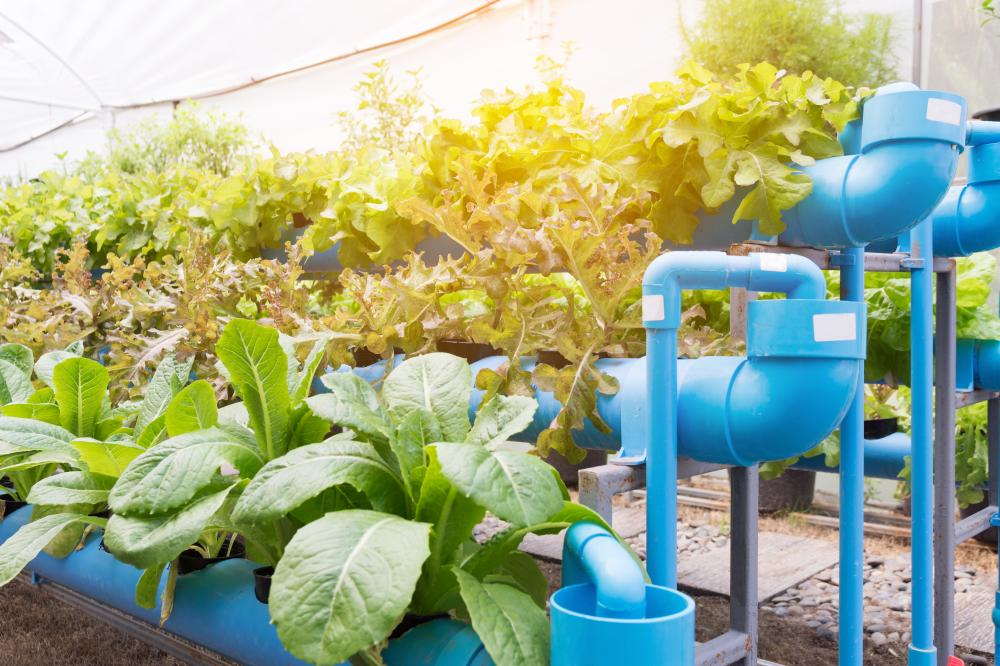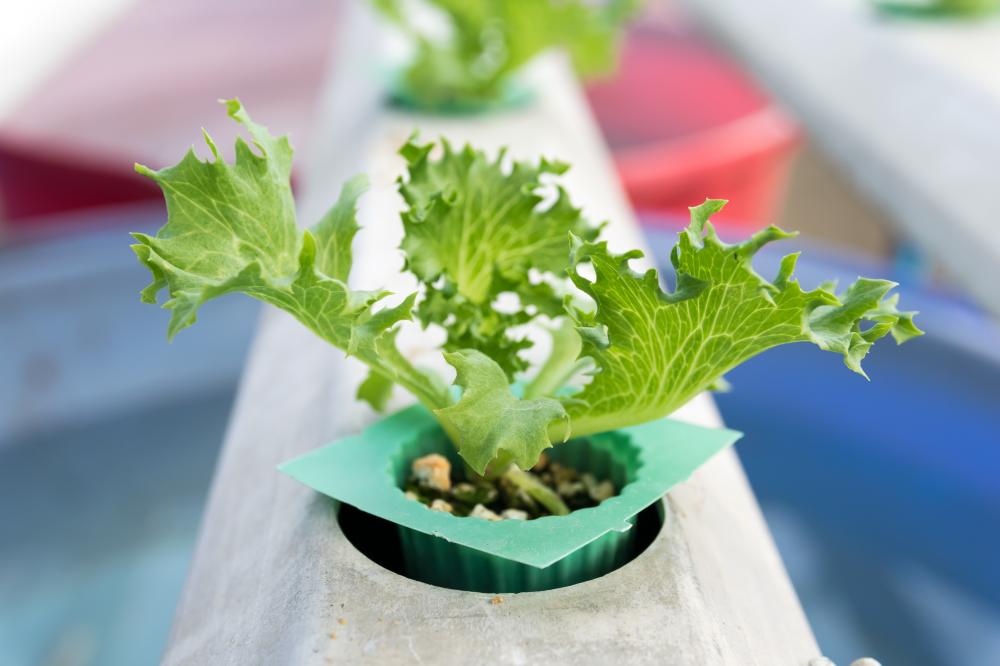Contents
- 1 Introduction to Hydroponics
- 2 Why Hydroponics?
- 3 Best Plants for Hydroponics
- 4 Hydroponics vs. Soil Gardening
- 5 From Our Experience
- 6 Challenges and Solutions
- 7 Innovative Approaches
- 8 Future of Hydroponics
- 9 What are the disadvantages of hydroponics?
- 10 What is hydroponics and how does it work?
- 11 What plants can be grown hydroponically?
- 12 Is hydroponic growing healthy?
- 13 How does hydroponics save water?
- 14 Can hydroponics be organic?
- 15 What makes hydroponics sustainable?

Introduction to Hydroponics
At Lettuce Be Farmers, our core belief is that gardening enriches lives, making our world a happier place. Among the diverse gardening methods, hydroponics has a special place in our hearts. This innovative technique involves growing plants in a water-based, nutrient-rich solution, bypassing traditional soil use. It’s fascinating how this method not only conserves water but also accelerates plant growth, offering a sustainable solution to modern agriculture challenges.
Why Hydroponics?
Why, you might ask, does hydroponics resonate so deeply with us? The reasons are manifold. Firstly, it allows for higher yield in smaller spaces – a game-changer for urban dwellers wanting to grow their own fresh produce. Secondly, this method greatly reduces the occurrence of soil-borne diseases, leading to healthier and more robust plants. Lastly, it’s a testament to human ingenuity, providing us with the means to cultivate food in areas where traditional farming would be unthinkable.
Best Plants for Hydroponics
Not all plants are created equal when it comes to hydroponic cultivation. Leafy greens like lettuce, spinach, and herbs thrive in hydroponic systems, owing to their relatively short growth cycles and minimal root space requirements. Tomatoes, strawberries, and peppers also fare well, offering bountiful harvests that are both visually appealing and delicious. Our journey in hydroponics has seen spectacular successes with these varieties, each bringing its unique flavor to the table, quite literally!
Hydroponics vs. Soil Gardening
Efficiency and Control
One might wonder how hydroponics stacks up against traditional soil gardening. For starters, hydroponics provides unparalleled efficiency and control over the growing environment. Nutrient levels can be tailored to the specific needs of each plant, directly influencing their growth rates and health. This precise management is harder to achieve in soil.
Space Utilization
Space utilization is another factor where hydroponics shines. Vertical farming techniques, which are often employed in hydroponic systems, drastically reduce the footprint needed for growing plants. This is a boon for urban gardeners who may only have a small balcony or windowsill at their disposal.
From Our Experience
Moving beyond the technical jargon, let’s share a slice of our journey. Our first foray into hydroponics began in a small, sunlit corner of our home, with a simple lettuce setup. The awe of watching the first roots emerge and leaves unfurl without a speck of soil in sight was magical. This venture not only yielded crisp, fresh lettuce but also deepened our connection with the food we consume. It’s this sense of wonder and fulfillment that we strive to share through Lettuce Be Farmers.
Challenges and Solutions
Embarking on a hydroponic adventure isn’t without its challenges. Initial setup costs and the learning curve associated with nutrient management can be daunting. However, we’ve found that starting small and gradually scaling up allows one to learn and adapt without being overwhelmed. Additionally, the community of hydroponic gardeners is incredibly supportive, offering advice and solutions to common problems.
Innovative Approaches
Utilizing Unconventional Spaces
In our quest to push the boundaries of hydroponics, we’ve explored utilizing unconventional spaces. Rooftops, old warehouses, and even repurposed containers can become verdant oases, challenging the notion of where food can be grown. These projects not only provide fresh, local produce but also help in revitalizing communities and reducing urban heat islands.
Hydroponics in Education
Another avenue we’re passionate about is integrating hydroponics into educational curricula. Teaching children about this technology fosters an appreciation for sustainability and innovation. It’s a hands-on way to learn about plant biology, nutrition, and the importance of water conservation, instilling valuable lessons for the future stewards of our planet.
Future of Hydroponics
The potential for hydroponics in addressing food security and sustainability is immense. As technology advances, we envision more energy-efficient systems, widespread use of renewable energy sources, and even integration with aquaponics to create self-sustaining ecosystems. The journey of hydroponics, from a curiosity to a cornerstone of sustainable agriculture, is a testament to human ingenuity and resilience.
In closing, hydroponics is more than just a method of cultivation; it’s a vision of the future. A future where everyone has access to fresh, nutritious food, where cities are green and vibrant, and where farming is no longer at odds with nature but works in harmony with it. At Lettuce Be Farmers, we are committed to making this vision a reality, one hydroponic system at a time.
- High yield in smaller spaces
- Reduction in soil-borne diseases
- Ability to grow food in untraditional farming locations
- Enhanced efficiency and control over plant nutrition
- Sustainability and water conservation
Join us in embracing hydroponics, a path to a greener, more sustainable world.

What are the disadvantages of hydroponics?
While hydroponics presents many advantages, it’s also fair to acknowledge its challenges. One of the primary concerns is the initial setup cost. Unlike traditional soil gardening that might start with just seeds and soil, hydroponics requires a bit more investment upfront for equipment like grow lights, water pumps, and nutrient solutions. Additionally, it demands constant monitoring and maintenance to ensure the optimal growth environment. There’s also a learning curve involved, especially in understanding the nutrient needs and pH levels crucial for plant health. Lastly, because plants in hydroponic systems are grown in a controlled environment, they might be more susceptible to abrupt system failures, where a pump failure or power outage could have significant consequences. However, with careful planning and engagement, these challenges can be managed effectively, making hydroponics a rewarding endeavor.
What is hydroponics and how does it work?
Hydroponics is a method of growing plants without soil, using mineral nutrient solutions in a water solvent. This technique allows plants to absorb necessary nutrients directly from the solution, facilitating a more efficient and controlled growth process. In hydroponics, plants are supported using an inert medium such as rockwool, clay pellets, or peat moss to provide physical support. The beauty of hydroponics lies in its versatility and efficiency; it can be set up almost anywhere, conserving space and water in the process. By delivering nutrients directly to the plant roots and controlling the environmental factors such as light, temperature, and humidity, hydroponics can produce higher yields faster than traditional soil gardening. It’s a fascinating blend of botany and technology, bringing the future of sustainable agriculture into our homes and communities.
What plants can be grown hydroponically?
Many plants thrive in hydroponic systems, especially those with a shorter growth cycle and lesser root space requirements. Leafy greens like lettuce, kale, and spinach are ideal for hydroponic setups due to their rapid growth and minimal space needs. Herbs such as basil, mint, and cilantro also do exceptionally well. For those looking for more variety, vegetables like tomatoes, cucumbers, and peppers, and fruits like strawberries can be cultivated hydroponically with great success. While most plants can technically be grown hydroponically, the key is to match the system design and nutrient solution to the specific requirements of the plant for optimum growth. This adaptability and versatility make hydroponics a popular choice for urban gardeners and commercial growers alike.
Is hydroponic growing healthy?
Absolutely! Plants grown hydroponically are as healthy as their soil-grown counterparts, if not healthier. Since hydroponic systems allow for precise nutrient management and reduce the risk of soil-borne diseases, plants grown in these systems can be more nutritious and free of pesticides. Additionally, the controlled environment reduces the need for chemical use, making hydroponically grown produce cleaner and safer. It’s essential, however, to monitor and maintain the nutrient solution’s balance to ensure plants receive all the necessary nutrients. When managed correctly, hydroponic gardens produce fresh, healthy, and delicious fruits and vegetables you can enjoy without worry.
How does hydroponics save water?
Hydroponics is incredibly water-efficient compared to traditional soil gardening. In a hydroponic system, water is recirculated, meaning that the same water is used multiple times, drastically reducing overall water use. Additionally, because the system is closed, there’s minimal evaporation compared to an open soil garden. In hydroponics, water goes directly to the plant roots and nowhere else, minimizing waste. Studies have shown that hydroponics can use up to 90% less water than soil-based gardening, making it a sustainable solution for growing food in water-scarce regions or urban settings where water use needs to be minimized.
Can hydroponics be organic?
Yes, hydroponics can be organic, although the concept differs slightly from traditional soil-based organic farming. In organic hydroponics, the nutrient solution is derived from organic sources, like fish emulsion, worm tea, or other plant-based nutrients. The challenge lies in ensuring these organic nutrients are fully soluble and available to the plants in water form. Moreover, maintaining an organic hydroponic system requires careful balance and monitoring to prevent nutrient imbalances or deficiencies. While some debate whether hydroponics can be truly organic due to the absence of soil, it’s entirely possible to adhere to organic principles by using natural nutrients and pest management strategies, supporting sustainable and healthy plant growth.
What makes hydroponics sustainable?
Hydroponics offers several features that contribute to its sustainability. First, the water efficiency of hydroponic systems conserves precious water resources. Then there’s the reduction in land use; since hydroponic systems can be stacked vertically, they require significantly less space than traditional farming. This aspect not only makes hydroponics suitable for urban environments where space is limited but also conserves natural habitats from being converted into farmland. Additionally, by controlling the environment and using less pesticide, if any, hydroponics contributes to less environmental pollution. These factors, combined with the ability to produce food locally, reducing the need for transportation and associated emissions, cement hydroponics as a forward-thinking, sustainable approach to agriculture.
Hydroponics Resources
- FDA – Pesticide Residue Monitoring – The FDA provides information on pesticide residue monitoring in various food products, including those grown through hydroponic methods.
- USDA – Organic Agriculture – The USDA offers resources on organic agriculture practices, which can be relevant for hydroponic growers seeking sustainable methods.
- University of Minnesota Extension – Hydroponic Growing Systems – The University of Minnesota Extension provides a guide to different hydroponic growing systems and their benefits.
- EPA – Nutrient Pollution from Agriculture – The EPA discusses nutrient pollution from agriculture and how hydroponics can be a solution to reduce such pollution.
- USDA AFSIC – Hydroponics Resource List – The USDA Alternative Farming Systems Information Center offers a comprehensive list of resources on hydroponics for further reading and research.

